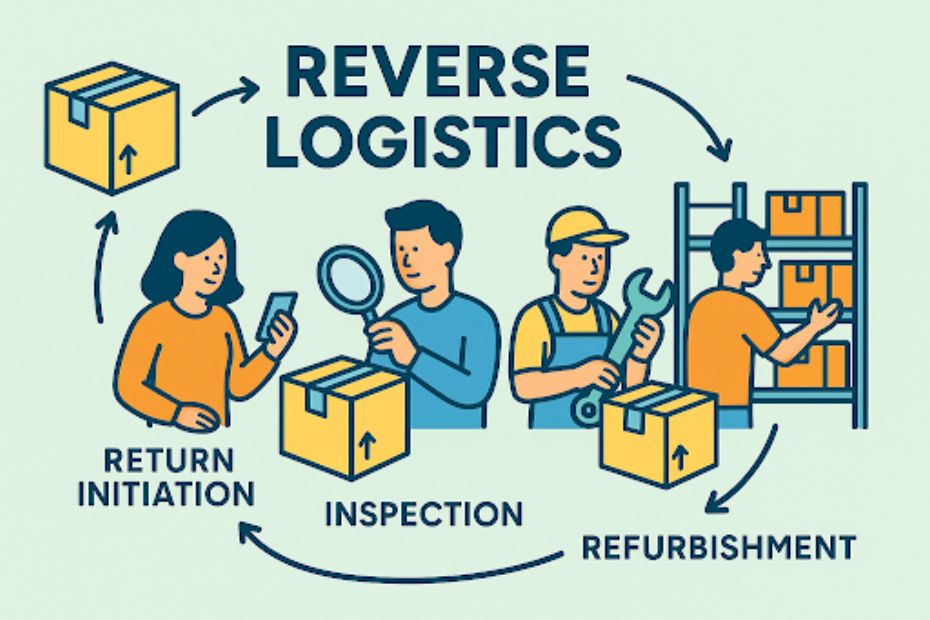You already know that reverse logistics can either be a cost center or a competitive edge—depending on how well you handle it. When returns, recycling, or refurbishments are managed poorly, they eat into your margins and disrupt your operations. But when you approach reverse logistics strategically, you don’t just protect your bottom line—you build loyalty, extend product lifecycles, and tighten your entire supply chain. In this guide, you’ll walk through six proven strategies that can make your reverse logistics smarter, leaner, and more valuable.
Start with Clear Return Policies
If your return policy confuses customers, your operations will feel it. You need a return process that sets expectations from the beginning—what can be returned, when, how, and through which channels. A straightforward, transparent policy reduces disputes, speeds up returns, and makes it easier for your team to manage inventory accurately. More importantly, it reassures your buyers. When they know there’s a simple return path, they’re more likely to complete a purchase in the first place.
A big part of success here is consistency. Make sure every customer-facing platform—website, app, product packaging—uses the same language. Train your customer service and warehouse teams on the exact steps involved. A smooth returns experience starts long before a package gets back to you.
Use Technology to Monitor and Streamline Returns
Manual processing slows everything down. If you’re still managing returns with spreadsheets or disconnected systems, you’re losing time and clarity. Return Merchandise Authorization (RMA) platforms, barcode scanning, and RFID tagging give you better visibility across the returns journey. When you integrate these systems with your existing supply chain software, you get cleaner data, faster processing, and fewer errors.
You also reduce guesswork. With tracking in place, your warehouse staff knows what’s coming back and when. Your inventory system stays up to date, and your customer support team can provide status updates instantly. It’s not just about efficiency—it’s about transparency that builds trust.
Study Your Return Data and Act on the Patterns
Returns aren’t just a hassle—they’re also a signal. If you’re seeing a spike in returns for a specific product or region, that’s not just a logistics issue. It’s a product quality problem, a packaging flaw, or a misalignment between your sales pitch and the product experience. Use analytics to break down return reasons by product type, vendor, and sales channel.
Once you see the patterns, you can work upstream. Maybe your product descriptions need more accuracy. Maybe one supplier needs to improve their packaging materials. Or maybe your sizing charts are throwing off customers. By catching these trends early, you don’t just reduce returns—you improve your entire value chain.
Build Strong Partnerships with Third-Party Logistics Providers
You can’t handle every aspect of reverse logistics in-house, and you shouldn’t try to. An experienced 3PL (third-party logistics provider) can give you access to specialized tools, scalable warehousing, and optimized routing—all without forcing you to build the infrastructure yourself. They can handle everything from pick-up to inspection, refurbishment, resale, or recycling.
But not all 3PLs are created equal. You need one that understands reverse logistics—not just standard fulfillment. They should be able to track returned goods in real time, offer disposal or repackaging services, and align with your sustainability goals. Treat this partnership like a long-term extension of your brand, because in the eyes of your customer, it is.
Assign a Dedicated Team to Reverse Operations
If reverse logistics is scattered across different departments, you’ll end up with delays, miscommunication, and duplicate work. Having a specialized team, or at least a dedicated point person, can fix that. This team should be responsible for building standardized workflows, setting performance benchmarks, and continually optimizing how you handle incoming returns.
This is also the team that should be communicating directly with vendors and customer support. When they see a spike in damage reports or return rates tied to a specific SKU, they’re in the best position to act. And when you empower them with the right tools and authority, they’ll spot inefficiencies long before they hit your financials.
Prioritize Sustainability and Product Recovery
Today’s customers care about what happens after a return. If you’re tossing usable products into landfills, you’re not just wasting inventory—you’re eroding brand trust. Build your reverse logistics program with sustainability in mind. That means inspecting goods quickly, refurbishing what you can, and reselling or donating when possible. For damaged items, explore ways to break down components for recycling.
You can even turn this into a profit center. Recommerce is a growing segment—especially in electronics and apparel. With the right setup, you can recover value from returned items while cutting down on waste. And from a marketing standpoint, your commitment to green logistics can become a core part of your brand story.
Top Reverse Logistics Tips
- Create clear return policies
- Automate with tech tools
- Analyze return patterns
- Partner with skilled 3PLs
- Assign a dedicated team
- Focus on sustainability
In Conclusion
Reverse logistics doesn’t have to be a weak link in your supply chain. If you approach it with the same level of precision and strategy as your forward logistics, you’ll see gains in efficiency, customer retention, and cost savings. The six strategies you just explored—from policy clarity to sustainability—aren’t just best practices. They’re tools that can help you take control of your returns and use them to fuel long-term success.
For more insights on global supply chain leadership and logistics strategy, visit my Strikingly profile. I share thought pieces and updates on how today’s innovations are reshaping the way goods move worldwide.

